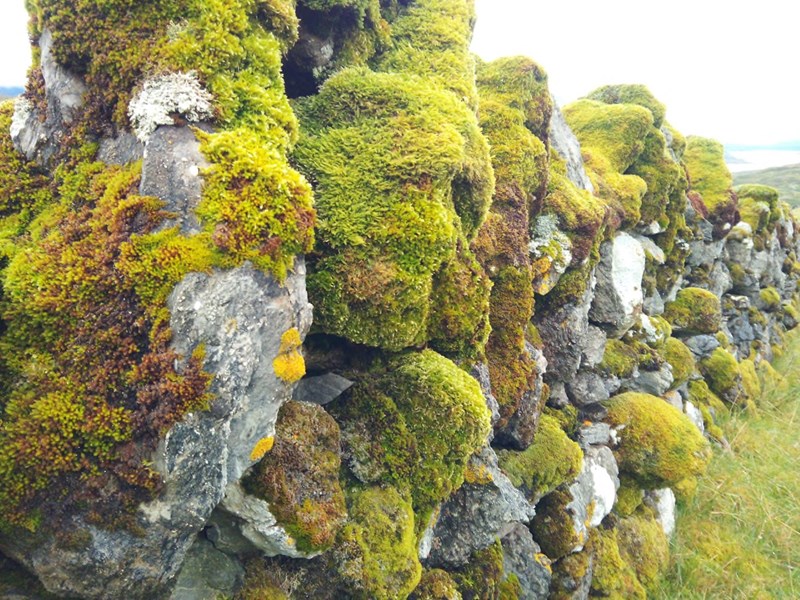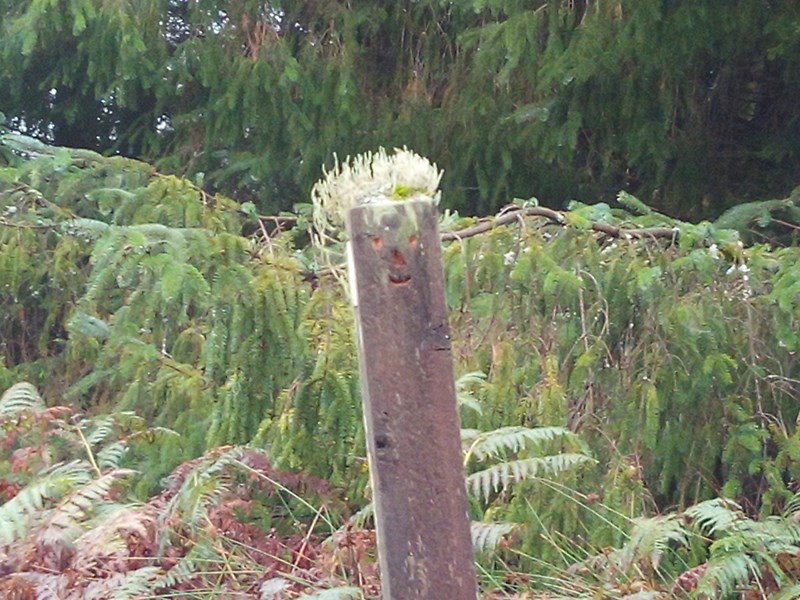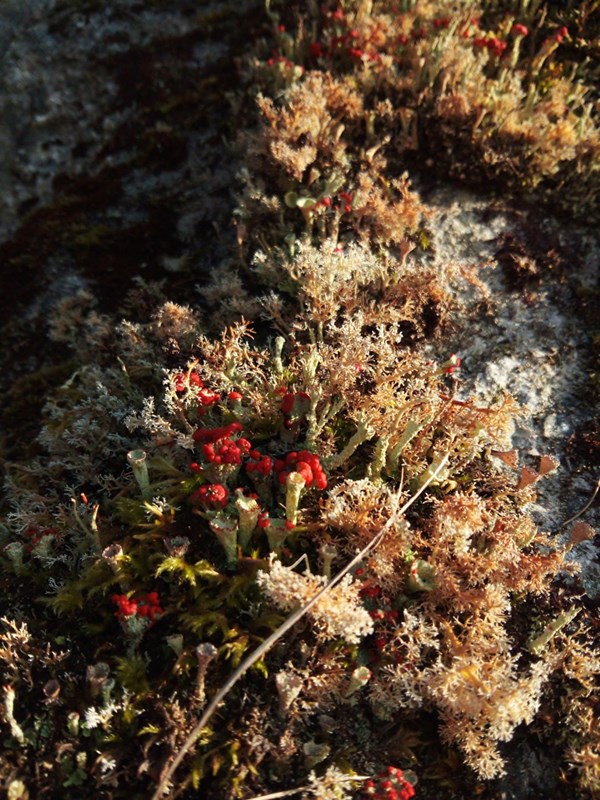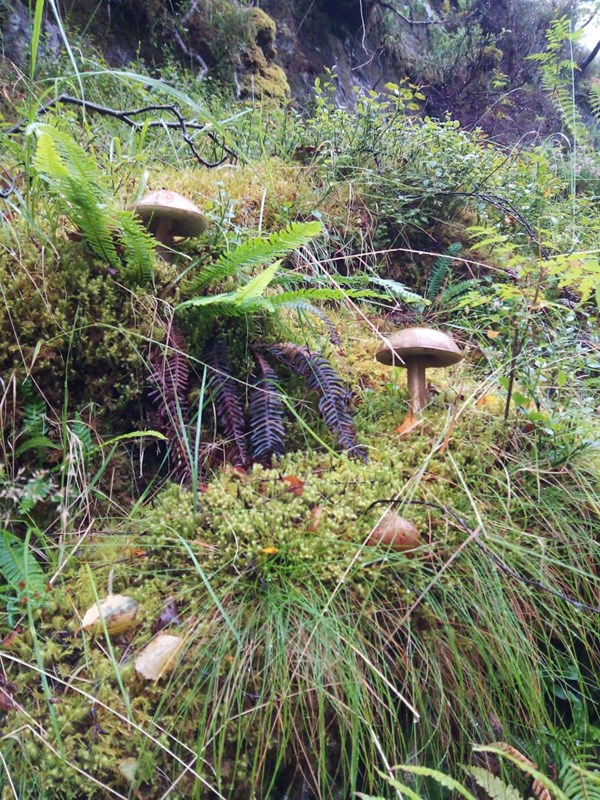“What the heck am I doing ?” Is a thought we all probably come across at some point in our Scottish Hillwalking career. The first time for me it was Ben More Assent which pushed this sensible doubt to the front of my mind. I was then crouched beside a large rock on top of Conival in complete white-out conditions, trying to get some brief shelter from the 60mph plus gusts of wind! My expensive waterproofs had forsaken all efforts to waterproof, whilst my toes swam in soaked socks. Against reason I pushed on to the top of Ben More, only so that I wouldn’t have to return (this was already my second attempt). I am sure the view is incredible when there is one, but this was not a day for it. Head down I beat my retreat into the wind.
When I finally made it down off the hill, the wind dropped, the clouds parted and the sun shone through. Relieved to be out of it, I stopped to have a bite against a stone wall. Maybe I was punch drunk by the wind, and happy to see something other than clouds and broken rock, but I soon found myself marvelling at the mosses and lichens covering the rocks in front of me. Moss is a fairly normal thing to take for granted and not pay too much attention to, but after that day in Assynt I began noticing it more and appreciating the “micro-scapes” it creates if you look close enough.

Small is Beautiful
Everyone likes a big, expansive, clear-sky panorama from the top of a mountain, but this can lead to a single - mindedness of how we approach the landscape, in being focused in the up and away. It’s probably an age related thing ( and definitely weather related!) But I am now as content kneeling on damp earth and inspecting an interesting patch of moss, or poking around the undergrowth to get a photo of an unexpected mushroom as I am standing up high ( mis) naming all the peaks. Photographing moss and lichen can feel a bit like abstract art, but it is highly addictive ! There are such subtleties of texture and colour and a seemingly infinite combination of variety and forms to discover. This is the landscape in miniature, close-up and it is just as engaging as the big picture.

Sphagnum Long - Johns
If, like myself, the extent of your knowledge is “it’s green, it’s wet and it’s all over the place up here then there are some “bryophyte “ basics. Bryophytes being the plant group that contains mosses, liverworts and hornworts. First off, bryophytes are one of the oldest plant groups in the world dating back a mere 450 million years and all land plants have likely evolved from them. In Scotland alone there are just about 1000 species of bryophyte many of which are only found here, like the Skye Bog Moss and the Scottish Beard Moss. We know how precious our peatlands are and cover over 20% of Scottish Land. These peatlands are mostly composed of layers of sphagnum moss that breaks down over time to form the rich carbon store that is peat. This in turn forms a unique ecosystem of plants, insects, birds and animals.
However, the usefulness of moss isn’t limited to the natural world. The 5000 year old iceman was found with moss stuffed in his clothing for insulation, as well as packing for food and to sleep on! Food for thought next time you pull on your soft, fleecy thermals. Greater water moss was used by the Romans as flame retardant packing in stone walls especially around chimneys hence it’s latin name fontinalis antipyretica, iron and bronze age boat builders also used it as a caulking, and because it can hold up to twenty times the amount of water of it’s dry weight, sphagnum moss also came in handy in child - rearing (think mossy nappies…oh luxury!)

Mushrooming basics
We are getting to that special time of year where the forests, verges and fields are going to be festooned with fungi! For the same reason that mosses thrive in Scotland, the cool damp climate and clean air, so do the mushrooms find ideal conditions here. Volumes of texts have been written on the subject of mycology so I can’t hope to do it any justice in a few lines. At the very basic level the most important thing is mushroom identification, as we all know mushrooms can range from “mmmm delicious to ugh deadly….” Never collect a mushroom without knowing for absolute certain what it is, there is many a macabre story about how it went wrong. There are many common mushrooms that are deadly poisonous and not even a good idea to touch, such as the Death Cap ( Silent assassin and killer of Kings) and Destroying Angel. Better to get yourself some good field guides specific to Scotland and the UK and never rely on one source of information. If in any doubt better to take a nice photograph and leave it be, the more you observe and store to the memory bank the better you will get at identification, which in itself is an enjoyable hobby without having to forage for food, in case of doubt, With the humble mushroom you can never be too careful. Like anything it takes time and patience but there is quite a landscape to discover whether up high or down low.

Caledonian Discovery has a few trips left for this year. As we head into the Autumn months which are so stunning in Scotland we have several trips planned which will benefit from show the colourful splendour of the landscape and give you the chance to get out and see the mosses, lichens and mushrooms for yourself.
Get in touch to book and discover the best season in Scotland:
- Departing 24th September- it’s a bike the Great Glen Mini Cruise for 4 nights £585.00 pp
- Departing 27th September- Mini Cruise 4 nights £585.00 pp
- Departing 15th October- Walk the great glen 7 nights £1115.00 pp
- Departing 25th October- Heritage 200 year anniversary mini tour 4 nights £565.00 pp